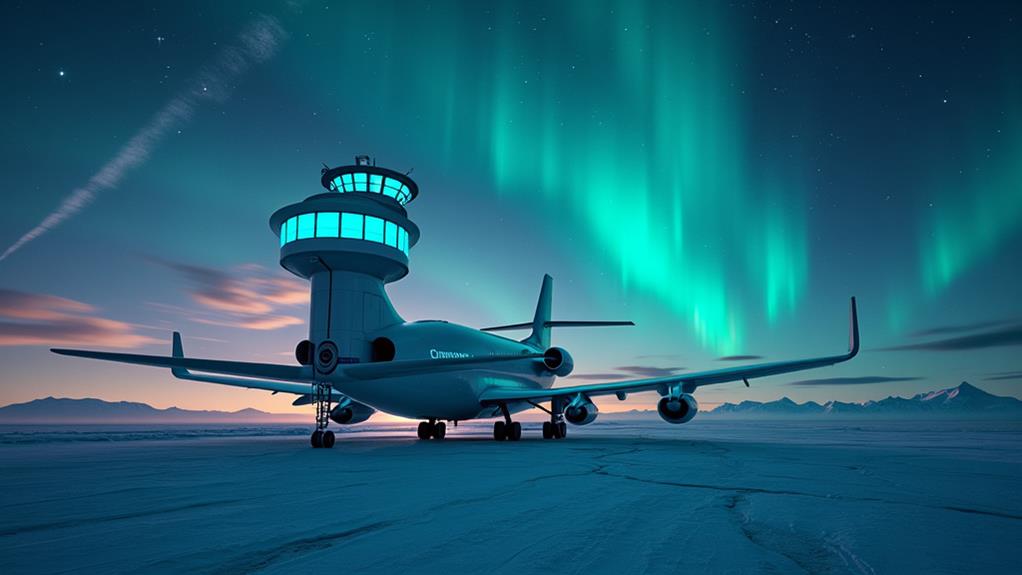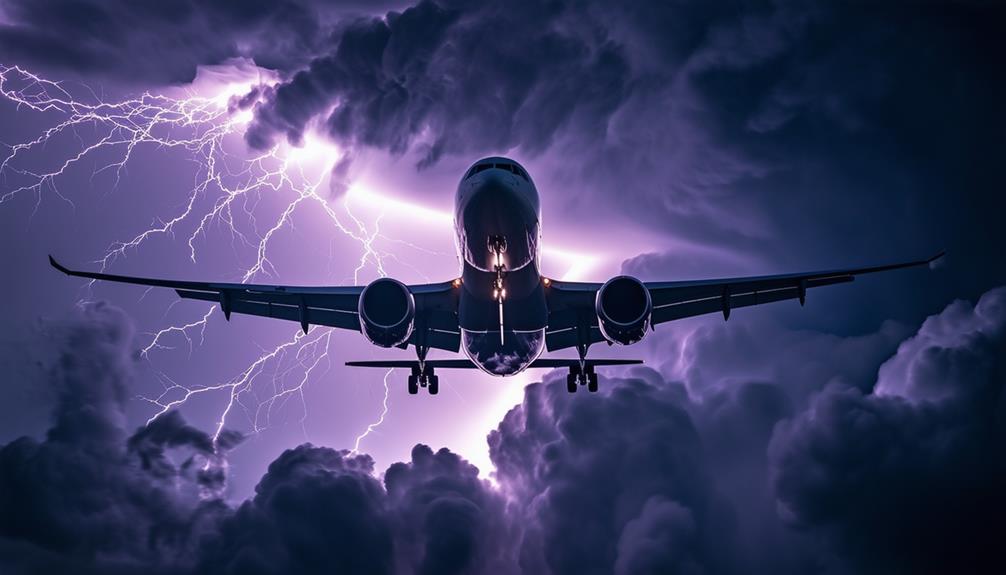The Northern Lights and Their Impact on Aviation

When you think of the Northern Lights, you likely envision mesmerizing colors illuminating the night sky. However, as a pilot, you must consider more than just the visual spectacle. Did you know that these captivating displays can disrupt high-frequency radio communications and interfere with GPS systems? Navigating with unreliable equipment can be challenging. Understanding how auroras affect flight systems is crucial for maintaining safety, especially during peak solar activity. How can you prepare for these challenges and ensure navigational accuracy?
Understanding the Northern Lights
Understanding the northern lights can be as mesmerizing as witnessing them. The aurora borealis, or northern lights, occur when charged particles from the sun, known as solar wind, collide with Earth's atmosphere. These interactions primarily happen between 80-250 km above the surface, producing stunning displays of light. The most common color seen is green, which results from collisions with oxygen at around 100 km altitude. Reds and purples can also appear, depending on the atmospheric gases involved.
Auroras become more frequent during solar maximum periods in the 11-year solar cycle, when increased solar activity leads to more geomagnetic storms. These storms are caused by disturbances in Earth's magnetic field due to solar wind, creating ideal conditions for observing the northern lights.
Predictions for aurora visibility are possible thanks to space weather forecasts. By monitoring solar flares and geomagnetic activity, scientists can provide alerts on when and where to look. Light pollution can greatly diminish your chances of seeing the northern lights, so it's best to venture out to darker, less populated areas.
For many cultures, auroras hold deep significance, with stories and celebrations woven around these natural spectacles.
Effects on Flight Systems
While the northern lights captivate with their beauty, they pose significant challenges for aviation systems. Auroras can disrupt high-frequency (HF) radio communication, crucial for long-distance aviation operations, by absorbing or degrading radio signals during geomagnetic storms. These disruptions can create serious communication gaps between pilots and air traffic control, jeopardizing aviation safety.
GPS systems, essential for modern aircraft navigation, can also malfunction during intense geomagnetic storms. Such malfunctions may cause navigational errors, which are a major safety concern. Additionally, auroral activity heats the upper atmosphere, increasing satellite drag. This change affects the performance and trajectory of low-altitude satellites, which play a crucial role in air traffic management.
Geomagnetic storms can induce currents in electrical grids and aviation systems, leading to equipment failures and communication disruptions. Pilots must remain vigilant and regularly monitor space weather updates. Familiarity with backup navigation systems is vital to mitigate the effects of auroras on flight operations.
Historical Impacts on Aviation

The historical impacts of auroras on aviation reveal a compelling interaction between natural phenomena and technological advancements. The Carrington Event of 1859, the strongest recorded geomagnetic storm, caused widespread disruptions in telegraph communications, foreshadowing the potential effects of solar activity on aviation systems. Early pilots flying in regions illuminated by the northern lights often reported minimal negative effects on their navigation systems, despite the dazzling displays in the sky.
While auroras posed a visual distraction, no significant safety issues were documented. Most pilots relied on backup navigation systems like VOR to ensure safe passage. Research indicates that geomagnetic storms can induce currents in aviation equipment, risking malfunctions or degraded performance in avionics, although such instances were historically rare.
The development of aviation meteorology standards has been significantly influenced by these historical observations. Understanding how northern lights and geomagnetic activity impact navigation and communications has led to improved preparedness for space weather events. By examining the past, the aviation industry has adapted to ensure safety and reliability, even under the spectacular yet challenging conditions created by the northern lights.
Technological Challenges
Modern aviation faces significant technological challenges due to the northern lights and geomagnetic storms. These phenomena can severely disrupt high-frequency (HF) radio waves, which pilots depend on for communication. Solar flares can further degrade or absorb radio signals, leading to substantial communication issues. Additionally, charged particles interacting with Earth's magnetic field can induce currents in power lines, risking transformer overheating and outages that can cripple aviation infrastructure.
Geomagnetic storms can also disrupt GPS signals, causing navigational errors, especially near the poles. This interference can result in significant problems for aircraft and ships reliant on satellite positioning systems. Moreover, satellite operations are compromised as auroras increase atmospheric drag on low-altitude satellites, potentially causing course deviations or premature re-entry.
Pilots must also contend with unreliable navigational equipment. Magnetic compasses and radar systems can become erratic during auroral events, making backup systems essential. These technological challenges underscore the need for robust measures to mitigate the impact of geomagnetic storms on aviation.
| Challenge | Impact |
|---|---|
| HF Radio Disruption | Communication issues |
| GPS Signal Interference | Navigational errors |
| Atmospheric Drag | Satellite course deviations |
Addressing these challenges is imperative for ensuring the safety and reliability of modern aviation systems.
Future Predictions and Safety Measures

As we approach the solar maximum, an increase in sunspot activity is expected, leading to more frequent auroral displays. These captivating lights indicate heightened space weather activity, which can impact aviation. Therefore, pilots must stay updated on space weather forecasts, particularly in auroral regions.
Monitoring space weather updates is crucial for anticipating disruptions. Geomagnetic storms can affect GPS and communication systems, so familiarity with backup navigation systems is essential. Being able to switch to alternative systems quickly can mitigate risks and keep flights on course.
Planning flight paths to avoid auroral activity is another effective safety measure. Steering clear of these regions minimizes visual distractions and potential impacts from geomagnetic disturbances. This proactive approach significantly enhances flight safety.
Advancements in forecasting methods are continually improving. As prediction accuracy for solar storms increases, airlines can better prepare for potential impacts on flight operations. Staying informed and adaptable will help navigate the challenges posed by the solar maximum, ensuring safer skies for everyone.




